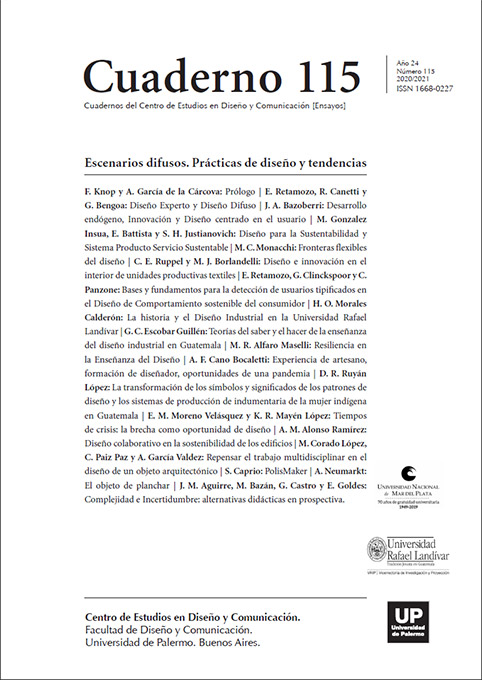Repensar el trabajo multidisciplinar en el diseño de un objeto arquitectónico. Propuesta de metodología de trabajo entre diseñadores estructurales y arquitectos como transición hacia una metodología BIM en Guatemala
Abstract
The design of an architectural object or building, regardless of its scale or use, involves a design process that goes from pre-design, preliminary design and design development to the generation of construction plans. These phases are composed of repeated design iterations and collaborative processes and interconnected with various disciplines, one of the most important is the communication between two designers, the architect and the structural designer.
Currently there are tools and methodologies to carry out better communication and development of the project, such as BIM (Building Information Modeling) that seeks to generate the integration of professionals and experts in different disciplines to work with virtual models in a coordinated and intelligent way. The implementation of this methodology requires a paradigm shift in the way of working of the different disciplines involved in the design of the object, for this a work methodology is proposed that allows generating a friendly transition towards an interdisciplinary work of the structural designer and architect . An exploration of the flow and work scheme between structural designers and architects is presented, through the presentation of the design of real architectural objects and infrastructure, as case studies. Emphasizing technology and digital tools that facilitate remote work between disciplines with better communication, generating efficiency in resource optimization, flexibility and adaptability of design.
References
Czmoch, I. & Pękala, A. (2014). Traditional design versus BIM based design. Procedia Engineering, 91(TFoCE), 210-215. https://doi.org/10.1016/j.proeng.2014.12.048
Herrera, R. F. & Vielma, J. C. (2018). Respuesta a la fragmentación de la industria de la Arquitectura , Ingeniería y Fragmentación de la Industria de la Arquitectura,. October.
Jung, N.; Häkkinen, T. & Rekola, M. (2018). Extending capabilities of bim to support performance based design. Journal of Information Technology in Construction, 23(February), 16-52.
Lancaster, F. D. & Tobin, J. (2010). Integrated project delivery: Next-generation bim for structural engineering. Structures Congress 2010, 2809-2818. https://doi.org/10.1061/41130(369)254
Muñoz-La Rivera, F.; Vielma, J. C.; Herrera, R. F. & Carvallo, J. (2019). Methodology for Building Information Modeling (BIM) Implementation in Structural Engineering Companies (SECs). Advances in Civil Engineering, 2019. https://doi.org/10.1155/2019/8452461
Robinson, C. (2007). Structural bim: Discussion, case studies and latest developments. Structural Design of Tall and Special Buildings, 16(4), 519-533. https://doi.org/10.1002/tal.417
Seglias, C. & Greenhall, P. (2012). Building Information Modelling ( BIM ): an Introduction and International Perspectives. Bim, July. https://doi.org/10.13140/RG.2.2.13634.58565
W Young Jr., N.; Jones, S. A.; Bernstein, H. M. & Gudgel, J. E. (2009). Getting Building Information Modeling to the Bottom Line. Construction, 213-222. https://doi.org/10.1080/17512549.2015.1043643
Los autores/as que publiquen en esta revista ceden los derechos de autor y de publicación a "Cuadernos del Centro de Estudios de Diseño y Comunicación", Aceptando el registro de su trabajo bajo una licencia de atribución de Creative Commons, que permite a terceros utilizar lo publicado siempre que de el crédito pertinente a los autores y a esta revista.


